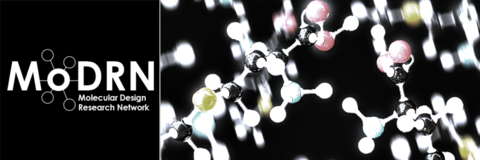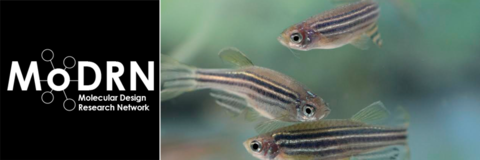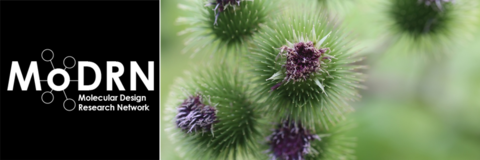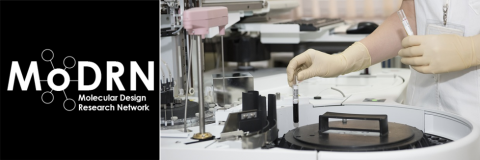ADME and Toxicology
Introduction: Chemical impact on health is usually investigated via the concept of ADME. This is how a chemical is Absorbed, Distributed, Metabolized, or Eliminated in living systems. Not all chemicals are impactful in the same ways, sometimes metabolism, for example, may not be an issue because of the way our liver metabolizes the compound and converts it into an inert substance. Some chemicals have means to be excreted, while others may not. Considering all aspects of how chemicals get into the body, how they move within the body, and how they get out of the body can help us assess the toxicity of a chemical.
Learning Outcomes: By the end of this module, the student will be able to:
- Define the four key components of ADME
- Relate physicochemical properties of chemicals to the impact they have on ADME
- Predict which physicochemical properties of chemicals have an impact on ADME
Background and Information: ADME (standing for Absorption, Distribution, Metabolism, and Elimination) is an important concept that describes potential impact a chemical or drug may have on a living system within the context of cellular biology and biochemistry. This is because movement and metabolism of molecules is determined by physicochemical properties of the molecule as well as the host system. The movement of molecules is called “kinetics” or “pharmacokinetics” and chemical properties such as polarity, molecule weight, molecular size, chirality, HOMO/LUMO, and many more all have an impact on the ADME potential of a molecule/toxin. ADME is generally used to describe the impact or a drug or pharmaceutical compound. However, the concept of ADME is applicable to non-pharmaceutical compounds, including those from toxic exposure. Drugs are specifically designed using ADME principles; however, chemicals for commercial use are not designed with any guidelines targeting ADME.
Absorption
There are four main routes of exposure:
- Inhalation through the respiratory system: a chemical in the form of a gas, vapor or particulate that is inhaled and can be excreted or deposited in the respiratory system.
- Dermal through skin or eye contact.
- Ingestion through the gastrointestinal system: Absorption through the digestive tract. Ingestion can occur through eating or smoking with contaminated hands or in contaminated work areas.
- Injection: Introducing the material directly into the bloodstream. Injection may occur through mechanical injury from “sharps.”
To be absorbed, a substance must cross one of the layers of cells that keeps “us” “in” and the rest of the world “out”: skin (including mucus membranes), lung, and the gastrointestinal (GI) tract. Most substances are absorbed by passive diffusion through membranes. A small number of biologically important atoms and molecules are actively taken up by cells. Examples include sodium, potassium, and calcium ions, amino acids, small sugars (mono- and di-saccarides). If your substance is very similar to one of these, there is an increased chance of cellular uptake. Solubility into membranes is the primary factor affecting absorption.
Distribution
The compound next needs to be able to move from the site of absorption to other areas of the living system if it is to be distributed. Not all compounds move easily. Most often movement is via the bloodstream but other compounds may move cell-to-cell as well. In general, there are four main ways by which small molecules cross biological lipid membranes: (Links to an external site.)
- Passive diffusion. Diffusion occurs through the lipid membrane from a high to low concentration (aka concentration gradient).
- Filtration. Diffusion occurs through aqueous pores, still from high to low concentration as a driving mechanism.
- Special transport. Transport is aided by a carrier molecule. Can move against the concentration gradient (low to high).
- Endocytosis. Transport takes the form of pinocytosis for liquids and phagocytosis for solids.
Many times the mechanism of transport for a certain chemical is unknown, and so we must judge its potential toxicity using other variables (such as molecular weight, ionization (pKa), and octanol/water partition coefficient (logP)).
Metabolism
Compounds begin to break down in the body by a family of enzymes in the liver called the Cytochrome P450 system. These enzymes can convert chemicals to reactive oxygen species (ROS), reactive intermediates, free radicals, and others. For example, redox reactions and potential, with a transfer of electrons, influence the toxicity of a chemical at the intracellular level. Scientific advances in toxicology and chemistry are starting to allow scientists to better understand these kinds of interactions, and they are able to map out more specific pathways, called Adverse Outcome pathways (AOPs). It is through understanding these pathways that a new generation of chemicals will be safely designed by chemists and others.
Excretion
Most excretion occurs through the kidneys as urine or as feces. Excretion is dependent on the process of kidney filtration at the glomerulous, and is largely based on molecular size and charge. Some molecules can be excreted through the skin as sweat and still some may be excreted through the lungs via gas exchange. If excretion is not a complete process, the molecule or metabolic by-product can bioaccumulate and impact living systems adversely. If a compound is lipid-soluble, it will bioaccumulate more quickly in adipose tissue. Bioaccumulation of lipid-soluble compounds such as DDT has been shown to be correlated with adverse health effects such as diabetes, heart disease, obesity, etc.
Several companies have developed tools for predicting toxicity related to ADME, such as ADMET Predictor by Simulations Plus, Inc., ADME/Tox by Sigma-Aldrich, LLC., PhysChem and ADME-Tox Prediction by ACD/Labs, PK/PD Database for Pharmacokinetic Properties by the Laboratory of Computational and Medicinal Chemistry, etc. These tools allow researchers (pharmaceutical and non-pharmaceutical) to predict potential toxicity in regard to ADME and physicochemical properties. NOTE: When investigating ADME in regard to toxicology, most information is centered on drug development. When searching for additional information in regard to toxicity modelling, using key search terms such as “chemical disposition” and “toxicokinetics” will yield additional supporting information for this topic.
Video: Dr. Paul Anastas, Director, Center for Green Chemistry and Green Engineering & Teresa and H. John Heinz III Professor in the Practice of Chemistry for the Environment, School of Forestry & Environmental Studies, Yale University
Assignment:
Match the following physicochemical properties most likely to have an impact on each component of ADME:
Physicochemical Property ADME Component
Molecular Size Absorption
REDOX Potential Distribution
Solubility Metabolism
LogP/pKA Excretion
Assignment Answer found HERE: ADME and Toxicology Answer Key
Click here to evaluate this module.
Resources:
- Brenner, G., & Stevens, C. (2012). Pharmacology. 4th ed. Pharmacokinetics, Chapter 2. Retrieved from https://www.us.elsevierhealth.com/media/us/samplechapters/9781416066279/Chapter%2002.pdf
- University of Idaho. (2015). eTox, Principles of environmental toxicology lecture series. Retrieved from http://www.webpages.uidaho.edu/etox/lectures.htm
- National Toxicology Program. (2015). Chemical disposition and toxicokinetics. Retrieved from http://ntp.niehs.nih.gov/testing/types/chemdisp/index.html
- Utah State University. (n.d.). Disposition of chemicals in the body. Retrieved from http://toxicology.usu.edu/660/html/dispos.html
This material is based upon work supported by the NSF Division of Chemistry and the Environmental Protection Agency under Grant No. 1339637.









